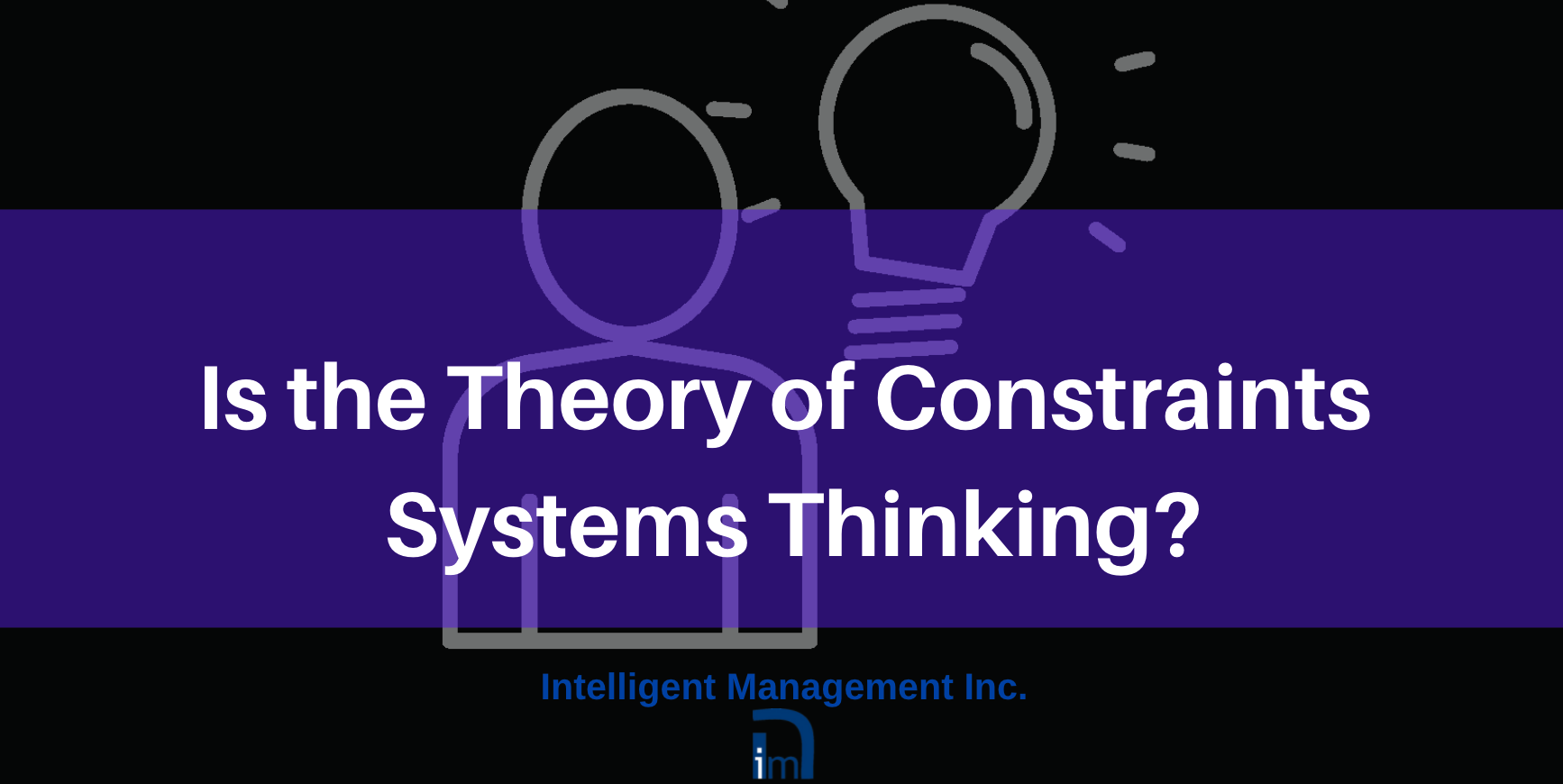
Someone reading our business novel ‘The Human Constraint’ asked us if the Theory of Constraints is different from Systems Thinking so we would like to address that in this post. It is a particularly relevant question this week when an Italian physicist, Giorgio Parisi, was awarded the Noble Prize for his work on complex systems. Two of our partners, Dr. Domenico Lepore and Dr. Giovanni Siepe, have vivid memories of Prof. Parisi coming to speak when they were physics students at Salerno university.
When we first started out with the Decalogue Methodology in 1996, we called our company in Milan, Italy “Methods for Systems Thinking”. It seemed so obvious to us that the work of Dr. W. Edwards Deming and Dr. Eliyahu Goldratt had developed in their own way a systemic approach to management.
In a short video, Peter Senge, author of ‘The Fifth Discipline’, defines Systems Thinking as the ability to:
- see consequences of actions
- see connections in any situations
- understand better how things unfold over time
In his work, Senge also covers the important concept of “mental models” that can influence how we see reality. Given Senge’s definition, we can state without any hesitation that The Theory of Constraints is Systems Thinking. It contains a set of systemic Thinking Processes that directly address mental models with a structured way of surfacing assumptions (limiting beliefs/mental models). The Thinking Processes guide us to reflect on how we think and how we can shift our thinking towards creating change and managing change in a whole system way. They help us map the unfolding of future states of reality and identify and solve unintended consequences. Challenging our assumptions is a crucial part of building breakthrough solutions with the Thinking Processes.
Senge’s definition of Systems Thinking may not be the same as other people’s. Indeed, there can be some disagreement about what Systems Thinking is and we much prefer the term Systemic Thinking to describe the work we do at Intelligent Management that has at its foundations the systems approaches of Deming and Goldratt.
Systems Thinking moves away from linear, mechanistic thinking that breaks things down into separate elements. Systems Thinking reflects a more contemporary understanding of nature that recognizes a focus on interactions and interdependencies as a more accurate depiction of our reality.

How is the Theory of Constraints different from Systems Thinking?
We suspect that if you attended a course on “Systems Thinking” from any respectable institution, while you would come away with some valuable concepts and tools, you would not have clear ideas and a method for designing and managing a company as a whole system as opposed to a traditional hierarchy with functions and departments. Sadly, this is the way the majority of companies are still built and run today, leading to a costly and frustrating sub-optimization of all the resources used.
What Deming and Goldratt have contributed to the world of business is a systemic understanding of what a company/organization really is and, in the Theory of Constraints, reliable protocols for managing every aspect of an organization, including building a systemic strategy, managing production flow, managing projects, managing distribution, managing marketing and sales, managing supply chains as well as managing all the human interactions that happen throughout these activities in a win-win way. In other words, the Theory of Constraints provides the means to do all the heavy lifting required to manage any company through a systems approach. We have spent the last 25 years encompassing and building upon all these aspects in our Decalogue methodology for systemic management.
So let’s just remind ourselves about the basics of a systems approach to managing organizations.
An organization IS a system
An organization is a whole system, and systems thinking helps you see, understand and act on that for better results. The alternative is to see your organization as ‘bits and pieces’ instead of as a whole entity. This is a very partial understanding and leads to unnecessary conflicts as well as the sub optimization of resources and output (see How Can We Optimize Resources and Processes?). As W. Edwards Deming defines it, a system us a network of interdependent components that work together to accomplish the aim of the system.
How do you ‘see’ the system?
How do you ‘see’ your organization as a system? By mapping out all the processes and interdependencies. This allows you not only to continuously improve your processes through understanding and managing variation but also to identify a strategic constraint, or leverage point in the system. Every system has a constraint. You may not be aware of it, but it is affecting the system’s ability to perform. When you identify, design and manage processes with the constraint in mind, you can dramatically increase performance of the whole organization (see What is a Systemic Organization?).
Traditional hierarchies miss opportunities
Why would you want your organization to think as a system? When organizations act as traditional hierarchies with silos, or as ‘bits and pieces’, they consistently miss the opportunity to foster productive and collaborative behaviour among their people. There are all kinds of solutions and innovations that can be arrived at with the intuition already present in an organization. It just needs to be triggered and nurtured. (see Hierarchy vs. Flow: How Can We Exert Control in Organizations?)
Tools for organizations
We hope this helps somewhat in understanding why systems thinking is not just useful but crucial for organizations to continuously improve and evolve. There are very robust “tools” for all of the things described above that have been tested for a couple of decades. They come from the Theory of Constraints and W. Edwards Deming’s approach to Quality. Our website is dedicated to exploring these systemic approaches. (see What Are the Thinking Process Tools?)
Intelligent Management has been guiding organizations to adopt a systemic approach to manage complexity and radically improve performance and growth for over 20 years through our Decalogue management methodology. The Network of Projects organization design we developed is supported by our Ess3ntial software for multi-project finite scheduling based on the Critical Chain algorithm.
See our latest books Moving the Chains: An Operational Solution for Embracing Complexity in the Digital Age by our Founder Dr. Domenico Lepore, The Human Constraint – a digital business novel that has sold in 42 countries so far by Dr. Angela Montgomery and ‘Quality, Involvement, Flow: The Systemic Organization’ from CRC Press, New York by Dr. Domenico Lepore, Dr. .Angela Montgomery and Dr. Giovanni Siepe






This piece makes a persuasive case that TOC isn’t just a management tool but a deeply systemic approach, rooted in challenging mental models and fostering whole-system change. I particularly appreciate how it emphasizes managing change emotionally and cognitively, reminding us that transformation involves both head and heart.
Thank you for the comment, Dennis! You have captured the essence of our work with TOC since 1996.